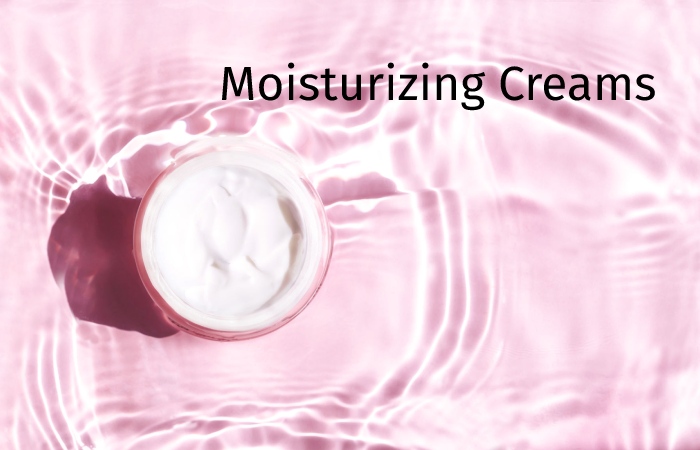Moisturizing Creams – Today, there is a widespread belief worldwide that the skin needs moisture above all to feel good and look smooth and fresh. Especially in middle-aged women. The idea has become established that daily or repeated application of moisturizing creams is necessary to avoid dry skin. In addition to the water-rich day and night care, moisturizing masks, serums, ampoules, or facial tonics are regularly in use. It is with the expectation that the skin will feel smooth, silky, and fresh and that wrinkles will be reduced. There are even entirely fat-free creams or gels on the market.
Table of Contents
Natural Cosmetics Dry Skin – Natural Remedies Without Moisturizer
With its advertising opportunities, the cosmetics industry vehemently promotes this view. Since, the extremely inexpensive raw material water has to be marketed. However, too high a water content in daily skin care is counterproductive. It increases dry skin problems, and leads to a vicious circle of dependencies and side effects.
Moisturizing Creams – Chemical Emulsifiers
A few decades ago, natural oils, fats, and waxes were considered the most important guarantors of good skin care, especially for mature or dry skin. Due to the possibilities of modern chemistry at the beginning of the 20th century, emulsifiers and surfactants were developed that make it possible to produce creams with a water content of 70%, 80%, 90%, and even more. The production of O/W creams (oil in water emulsions) with a tiny proportion of care substances became technically possible.
Until the development of modern chemical emulsifiers, only water-free balms and W/O ointments (water in oil emulsions) contained at least 60% nourishing oils.
The More Water – The Higher The Profit
Since water is naturally a very cheap raw material, even if it is demineralized and processed for industrial production, so a considerable profit can be made. Experts, therefore, refer to the water used in cosmetic products as “profiterole.” Other cheap raw materials from the petrochemical industry also increase the industry’s profit margins.
The Necessary Water Content In Creams Depends On Various Factors
Every living organism consists mainly of water. The natural water content of the adult body is around 60%, which continues to decrease in older people. Children store up to 75% water. Cosmetic daycare should support the skin’s natural balance, and the skin should not be offered more water than it naturally corresponds. It means that the water content in cosmetic products should be reduced for middle and older age groups. From about 35 years of age, a care line should contain more nourishing oils and protective waxes than water, and moisturizing products should be avoided to prevent sensitive, inelastic, and dry skin.
Adverse Effects Of Moisturizers
The skin loses its ability to protect and nourish itself and becomes dependent on moisturizing products. In the initial phase, the skin feels smooth and comfortable. Later, however, you can no longer do without moisturizers and have to reapply twice a day. The feeling of your skin that has not been creamed is unbearable. It means that tolerance towards the natural skin has decreased massively. Chemical ingredients such as paraffin or silicones in conventional cosmetics support the effect with the consequence: skin and user have become dependent.
Conclusion
What cares for the skin is not the water it contains but the high-quality vegetable oils and waxes. A high water content, as found in moisturizing creams and gels, leads to dependency, reduced regenerative capacity, irritated and dry skin, and premature aging. Therefore, optimal skin care relies on a generous proportion of nourishing vegetable oils and protective waxes.
